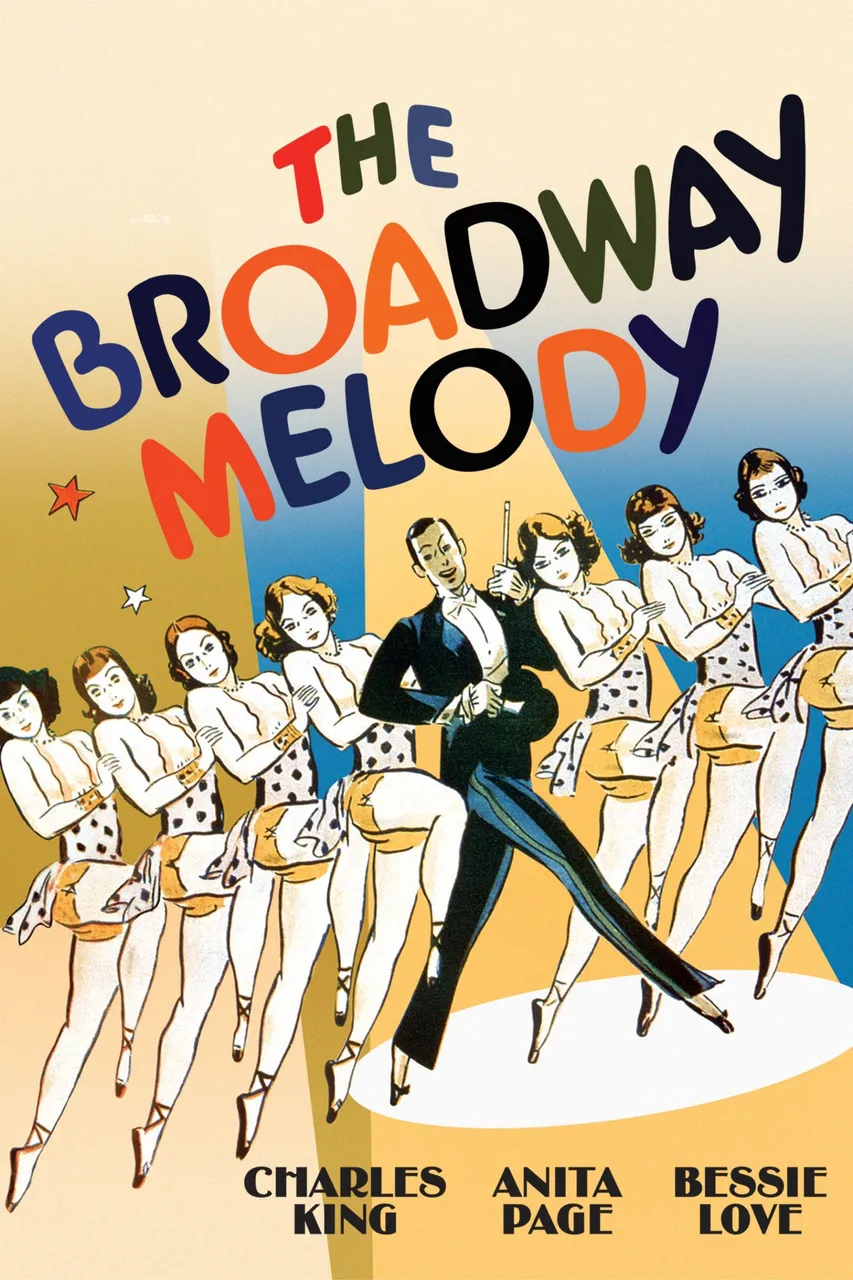
The Broadway Melody, also known as "The Broadway Melody of 1929," is a 1929 American pre-Code musical film and the first sound film to win an Academy Award for Best Picture. It was directed by Harry Beaumont and written by Sarah Y. Mason, Norman Houston, and James Gleason.
The film features vaudeville sisters Hank (Bessie Love) and Queenie Mahoney (Anita Page) taking their act to the Broadway stage. The movie was made to be a lighthearted extravaganza and set a new standard for big-budget films, establishing an archetype for musicals to come.
Plot
The Broadway Melody follows the story of vaudeville sisters Hank and Queenie Mahoney as they try to make it big on Broadway. The plot revolves around their friend Eddie Kerns, a small-time vaudeville performer who writes a hit song and is hired by Broadway producer Zanfield to perform in one of his revues.
Matters of the heart complicate their attempt to succeed in show business, as Eddie's affections shift from Hank to Queenie, leading to romantic entanglements. The film is known for its early use of Technicolor and its influence on the musical genre in Hollywood.
Watch For free
If the video doesn't play on your browser, try another one. The videos work with Opera, Firefox, Chrome, and Edge. Some films take a bit to load so be patient
Cast
- Charles King as Eddie Kearns
- Anita Page as Queenie Mahoney
- Bessie Love as Hank Mahoney
Director: Harry Beaumont
Writer: Norman Houston and James Gleason
Box Office Gross: $2,800,000
Distributor: Metro-Goldwyn-Mayer
Genre: Musical
Release Date (Theaters): Feb 1, 1929
Release Date (Streaming): Apr 1, 2012
Themes & Reception
The Broadway Melody is a groundbreaking film that won the Academy Award for Best Picture in 1929, making it the second film and the first sound film to win the award. The film's themes of star-struck performers looking for both romance and their "big break" on Broadway have become part of American motion picture culture.
The movie was praised for its energy, fast pace, witty dialogue, and crisp delivery of the actors, which was unusual for early sound films. However, some critics have noted that the film's storyline is melodramatic and features a clichéd love triangle with weak dialogue.
Despite this, The Broadway Melody is considered an iconic film that set the standard for many musicals to come.
Challenges Faced
The film was made during the early days of sound technology, and director Harry Beaumont had to run a print of the film in an empty theater to calibrate the acoustics. Additionally, the film's storyline and dialogue have been criticized by some critics as being melodramatic and clichéd.
Visual Styles & Techniques
The visual style and techniques of The Broadway Melody have been subject to both praise and criticism. The film's visual presentation has been described as humdrum, with on-stage performances captured in wide shots from a great distance away, lacking visual intimacy and editing.
However, the music in the film is noted for sounding rich and giving the visuals an added punch, with occasional close-ups breaking the visual monotony. The film was shot in black-and-white, with one sequence in color, and presented in the aspect ratio of 1.37:1.
The use of early two-color Technicolor in The Broadway Melody was influential, as was its newly-written musical score. The film's significance lies in being the first true musical film, and its success established sound film as viable entertainment.
Setting
The setting of The Broadway Melody primarily takes place in New York City, where vaudeville sisters Hank and Queenie Mahoney attempt to transition from the vaudeville circuit to Broadway. The setting captures the excitement and allure of Broadway during the early days of sound film, providing a backdrop for the characters' aspirations and conflicts.
Fun Fact
The Broadway Melody was the first sound film to win the Academy Award for Best Picture, marking a significant milestone in the history of cinema.